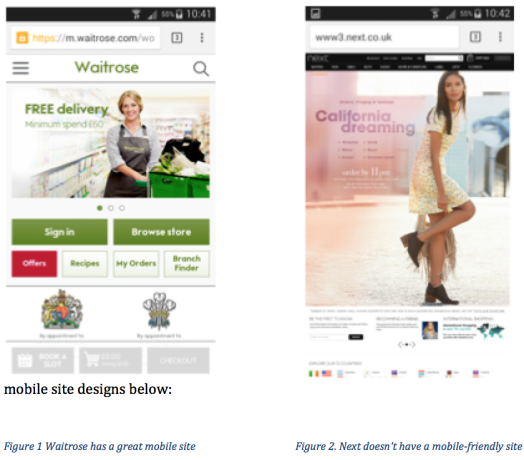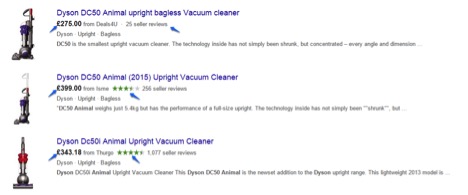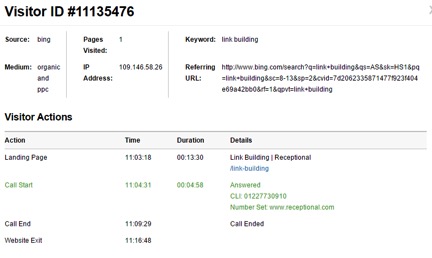With keywords and ad placements growing ever more competitive, it’s important that you’re making full use of every paid search option that’s available and relevant to your business, as well as ensuring that your basic account structure and targeting is fail-proof.
So now that the first quarter of the year is almost complete it’s time to make sure your PPC campaigns are carrying their weight.
These top tips are sure to help you see a boost in your campaign performance.
Tip #1 – Harness Mobile Traffic
Mobile browsing is increasing year over year and advertisers have seen huge increases in impressions and clicks from mobile devices. So ensuring that your site or campaign caters for mobile traffic is more important than ever as this trend is set to continue throughout 2015.
Today, every company with a website needs to make sure that they are providing a top mobile user experience and bolstering paid search campaigns.
However, despite the rising trend in mobile traffic, many companies are not going mobile-friendly with their websites. Here are a few examples of good and bad.

What can you do to harness mobile traffic for your PPC campaigns? Here are some suggestions.
- Secure additional resources from your business to make sure your website addresses mobile responsiveness and usability
- Include mobile-specific sitelink extensions so that important text isn’t truncated. Generally, mobile sitelinks should be between 17 – 25 characters. If you’re seeking to drive phone calls, then use Call Extensions to automatically populate your business number in the user’s phone dialler, literally making you just one click away.
- Remember that when it comes to mobile traffic one size does not fit all! Create dedicated mobile ads that use specific mobile language to increase click-through rates.
Tip #2 Review PPC Performance by Day and Time
With any campaign there are likely to be peaks and troughs when you can capture the biggest audience and conversions for your PPC campaign. Narrowing the peaks down by hourly slots of each day of the week is one sure-fire way to help boost your AdWords campaign performance.
It’s important to keep reviewing this campaign data as it could yield some very revealing data about your audience’s online behaviour. Use the information to consistently adjust your ad scheduling and bids accordingly for ultra-efficient ad campaigns and a much higher return on investment.
Tip #3 – Review PPC Performance by Location to Effectively Geo-Target
As above, it’s important to keep reviewing your ads’ performance by location as this could reveal some interesting trends. Using location data together with peak day/time data will help you target your ads and adjust your bids for the best possible results.
This data is also useful in other areas of your marketing strategies and could help shape other marketing channels and campaigns. Keep checking, keep up to date and keep the return on investment maximized.
Tip #4 – Increase Revenue with Google Shopping
Google Shopping has been around for a long time, but with Google’s heavy promotion of this channel, these days it’s a different ball-game. The last year has seen a considerable rise in competition on Google Shopping and for many this has meant an increase in cost per click bids (CPCs). One of our retail clients experienced a 63% increase in cost, but this has also come alongside rising impression levels, which have been doubling year-on-year due to wider syndication of these ads through Google’s Search Partners.
So, if you’re looking to promote a product that’s widely available through other online sellers and retailers, then you should consider a few key points.
Firstly, the rise in impression levels for our clients has also coincided with a drop in clicks for product-specific non-brand campaigns, with the click-share migrating over to Google Shopping. The upshot is that the overall cost per acquisition (CPA) has been on the rise – meaning it’s now more expensive to generate sales.
Secondly, if you intend to use Google Shopping then you’ve got to ensure that you have a manageable and steadfast shopping campaign with a granular setup to help you keep track of those all-important acquisition costs.
Thirdly, remember that in an online sales environment, time is of the essence for potential customers. Shopping campaigns make price comparisons quicker and easier for consumers: on Google Shopping you’ll need to ensure that your product stands up against like-for-like competition on price, delivery costs and product descriptions… or you could be quickly overlooked.

To summarize, Google Shopping focuses on price points and costing, making it more difficult to promote USPs that justify pricing. With the trends listed above set to continue this year make sure you’re on point in this channel.
Tip #5 – Use Call Tracking to Convert
Whether your business already generates lots of phone calls from customers, or you’re looking to increase the number of calls to your business, then you need to install call track solutions to help keep your marketing budgets in check and optimized. Many businesses are now discovering how invaluable call tracking can be and are adjusting their campaigns accordingly – so don’t get left behind.
It’s vital to remember that although there is a cost associated with installing call tracking solutions, it’s a long-term investment that should pay dividends in time. Smaller advertisers might be tempted to put off using call tracking, but the clarity of insight that it provides on the provenance of your traffic could revolutionize the way you budget and run your campaigns.
Even Google is now jumping on the bandwagon with its own ‘Website call conversions’ solution. For some, this is a cost-effective means for marketers to track calls from PPC using a dynamic ‘03’ tracking number on your website. However, like most agencies, we’re all about the details in the data so we prefer to opt for the more advanced and comprehensive solutions, like those provided by PPC call tracking software. Yes, there is a monthly subscription and calls cost, but the data provided by this tool is far too significant to overlook when it comes to robust marketing strategies.
Your chosen call tracking software should come with a dashboard that gives you an overview of relevant and constructive information, including the keyword the caller used to click on your ad, the web pages viewed prior to their call and which PPC campaigns are generating the most phone calls. Here’s the information we can see in our call tracking software dashboard.

This data gives you ample opportunity to continue reviewing and adjusting your ads and wider marketing strategies for maximum ROI.




